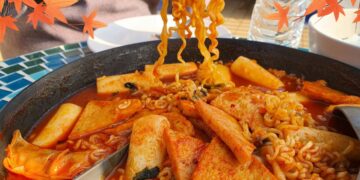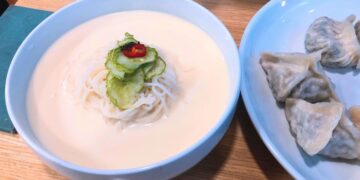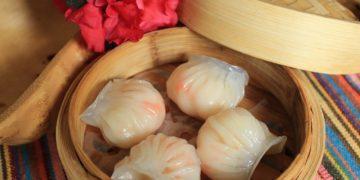Let us dive into everything about Songpyeon, the iconic traditional food during Chuseok in South Korea, from its meaning, what it represents, and how this dessert actually tastes.
South Korea Traditional Food in Chuseok, Songpyeon: What It is, Meaning, and How It Tastes Like
Just like how Americans feast on turkeys at Thanksgiving, and the Chinese have mooncakes during the Mid-Autumn festival, South Korea celebrates its Chuseok with colorful chewy desserts, Songpyeon.
So, what is Songpyeon?
Songpyeon is actually one of the many variations of tteok (Korean rice cakes). It’s made from rice flour dough that’s kneaded into small, crescent-moon shapes. Then, you fill the dough with all sorts of yummy ingredients like sweetened sesame seeds, red bean paste, chestnuts, or even honey, and place on a layer of pine needles to steam.
Thanks to the rice flour dough, Songpyeon has this chewy and a bit of sticky sensation in your mouth. It also has unique flavors depending on the fillings.
For instance, if you fill the dough with sweetened sesame seeds, you’ll get a nutty, slightly sweet taste. Meanwhile, red bean paste gives it a richer, earthy flavor, while chestnuts or honey fillings add a hint of natural sweetness.
And yet, what makes Songpyeon different from other Korean tteoks is the subtle, refreshing aroma that comes from the pine needles used in the steaming process.
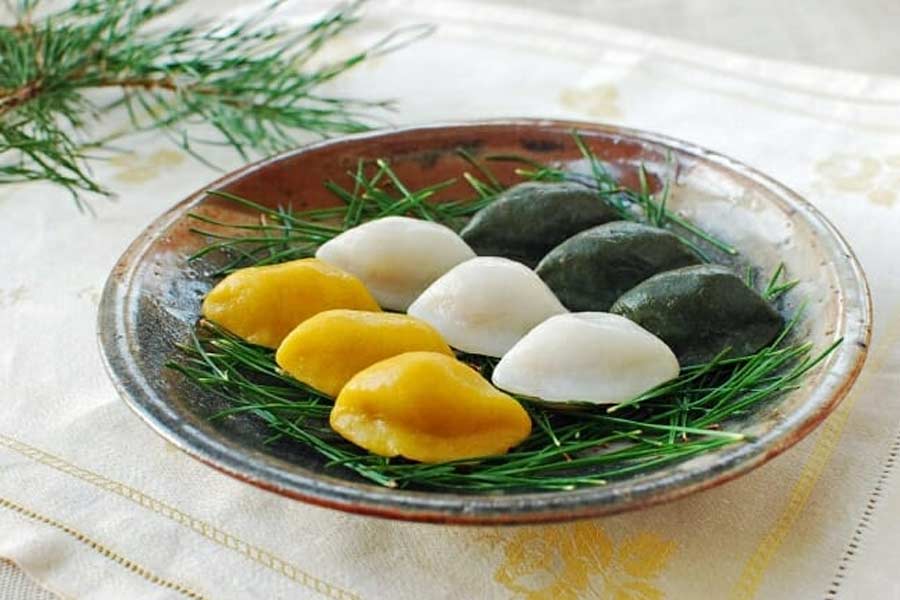
Songpyeon’s Korean Pronunciation and Literal English Translation
In the native language of South Korea, here’s how you write Songpyeon: 송편 (Hangul); 松䭏 (Hanja). If using the Romanization version, you can pronounce the word Songpyeon as Song as in “song,” and pyeon sounds like “pyawn” (rhymes with “yawn” but with a “p” sound). So, it would be something like “song-pyawn.”
Meanwhile, the word songpyeon doesn’t directly translate to anything in English. And yet, English-speaking individuals often described Songpyeon as “half-moon-shaped rice cake” because of its crescent form.
Since the name is so unique that it’s hard to simplify it into one English word, we usually just call it Songpyeon.
Why Songpyeon Becomes the Food Centerpiece During Chuseok in South Korea
During Chuseok, Songpyeon becomes the center of the spotlight at most family gatherings in South Korea.
Yes, you will most likely find this traditional iconic food everywhere in the country. All the South Korean blogs and TV shows will also feature the many different recipes for making this crescent-moon delicacy.
However, did you know that there’s actually a meaning behind this sweet and delightful icon? Behind the lovely appearance of this traditional food, Songpyeon has a deep cultural significance that is closely tied to the meaning of Chuseok tradition in South Korea.
Firstly, the half-moon shape of Songpyeon symbolizes the wish for growth and prosperity. It represents the idea that just like how the moon grows into a full circle, Korean families will continue to flourish over time.
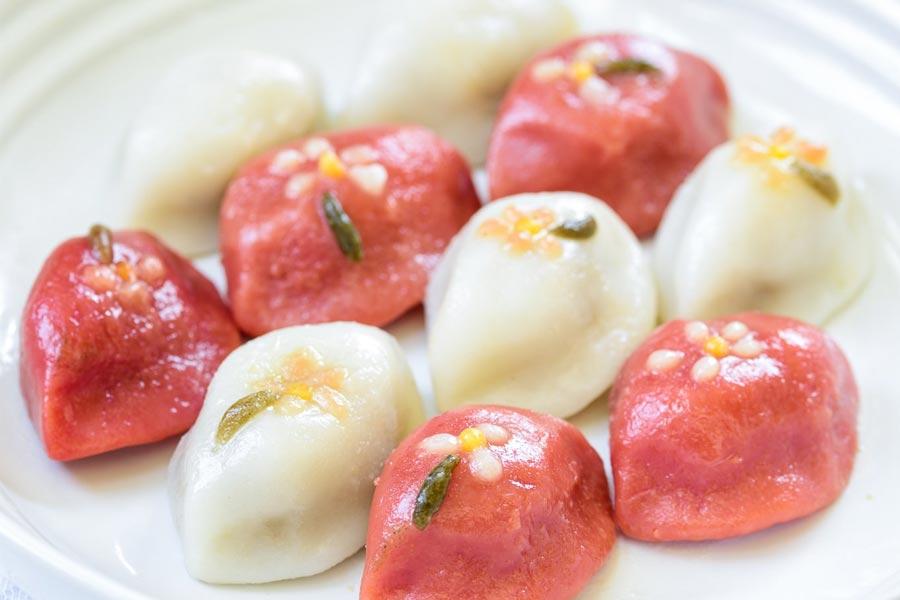
At the same time, similar to other traditional Korean holiday foods, making songpyeon together as a family is considered a bonding activity. The unique legend even says that the person who makes the prettiest songpyeon will have beautiful children!
These are the main reasons and values behind why Songpyeon became the most important traditional food during Chuseok in South Korea.
Different Types of Songpyeon
Furthermore, there’s actually a wide variety of fillings and styles that can change depending on the region, family traditions, or even personal preferences.
So, let’s break down some of these variations:
Sesame and Honey (Classic)
Firstly, we have sesame seeds and honey, the most traditional filling for Chuseok food in South Korea, which is made with ground sesame seeds mixed with honey or sugar.
It has a mildly sweet, nutty flavor, which balances the chewy texture of the rice cake. This filling is popular because it’s simple but delicious, and it represents wishes for abundance and prosperity. Hence, this Songpyeon variation has the closest value to the meaning of Chuseok in South Korea.
Sweet Red Bean Paste
Secondly, another common filling is sweet red bean paste (pat). This filling is smooth, slightly sweet, and has a deep, earthy taste.
Red beans are used in many traditional Korean desserts, and songpyeon filled with red bean paste is a favorite for those who enjoy a more robust flavor.
Chestnuts and Jujubes
Thirdly, in some regions, especially in the southern parts of Korea, people fill their songpyeon with chestnuts or jujubes (a type of Asian date).
The chestnuts give the rice cake a nutty, subtly sweet flavor, while jujubes offer a sweet, tangy contrast to the chewy rice dough.
Beans and Legumes
Additionally, there are certain areas in South Korea that incorporate black beans, mung beans, or other legumes into their songpyeon fillings. These versions tend to be less sweet and more hearty, offering a different take on the traditional treat.
Mung beans, for example, have a mild, slightly nutty flavor that complements the softness of the rice dough.
Pine Nut Filling
At the same time, pine nuts are often mixed with honey or sugar to create a crunchy, slightly sweet filling. This version is prized for its delicate, nutty taste, and pine nuts are also believed to bring good fortune.
Colorful Songpyeon
Meanwhile, the dough itself can vary in color based on natural ingredients added during preparation. For example:
- Mugwort (Ssuk): This plant is often added to give songpyeon a dark green color, along with a slightly herbal, earthy flavor.
- Pumpkin (Hobak): Pumpkin puree or powder can be mixed into the dough, resulting in a bright yellow hue and a mild sweetness.
- Purple or Pink Songpyeon: Rice flour can be colored using natural dyes from gardenia seeds, strawberries, or even purple sweet potatoes, making the songpyeon visually appealing and adding subtle flavor notes.
Regional Variations
And eventually, different regions of Korea actually have their own twists on songpyeon:
- Jeolla Province is known for larger songpyeon stuffed with more savory fillings like mung beans.
- Gangwon Province often uses acorn flour in the dough, which gives the songpyeon a distinct, nutty taste and darker color.
- Seoul and Gyeonggi Province tend to stick with the more traditional sesame and honey fillings, keeping their songpyeon small and dainty.
Modern Twists
Still, there are also some modern versions of songpyeon that add to the many variations of this traditional food during Chuseok in South Korea.
Some modern versions of this Korean traditional food include more contemporary fillings like chocolate, fruit jams, or even green tea-flavored paste.
While these may not be so traditional, they have successfully added appeal to younger generations or those looking for a creative twist on the classic rice cake.
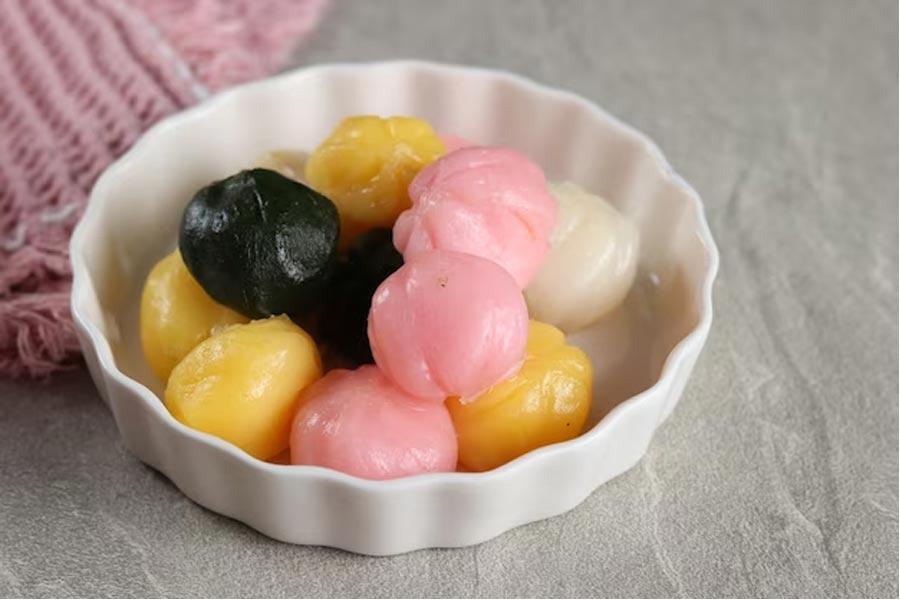
Finally, there are so many things we can learn about Songpyeon and its meaning as the traditional food icon for Chuseok in South Korea. But what about you? Do you have any specific food icon you eat to celebrate your favorite holidays? Please share them with us.
Related Posts
4,994 total views, 3 views today



